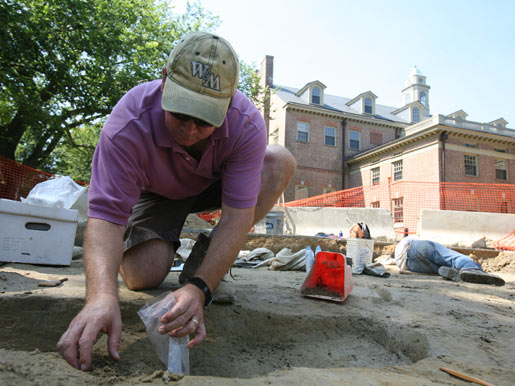On-campus discovery of 200-year-old dog graves poses a significant archaeological mystery
Laboratory analysis by the College of William and Mary's Center for Archaeological Research (WMCAR) has revealed that the bone fragments found this summer in two unmarked graves on campus are the remains of dogs interred some two centuries ago.
The discovery represents a significant scholarly mystery, as researchers both at WMCAR and in the College’s Department of Anthropology say that evidence of the formal interment of dogs from the Colonial period, dating from the late 17th to mid-18th century, is unprecedented.
“I don’t know of any instance of the formal, intentional interment of animals in the 18th century, either dogs or cats,” said Joanne Bowen, a research professor in William & Mary’s Department of Anthropology and zooarchaeologist at the Colonial Williamsburg Foundation. “We find them in the 19th century. But in the Colonial period, people didn’t think of their dogs and cats in the same way we do now.”
Joe Jones, WMCAR director, said the context of the burial sites suggested that the remains might be human. Both graves were carefully excavated rectangular shafts, consistent with human burials. In addition, Jones said the graves were aligned east and west, congruent with Christian burial practices of the Colonial period.
“When we first identified the sites, we treated the remains as human because they were buried like people,” Jones said. They were monitoring removal of the paving of James Blair Drive, part of an ongoing effort to avoid damage to William & Mary’s archaeological heritage during construction work.
Jones said discovery of any suspected human remains requires that work be suspended and the find reported to the Virginia Department of Historic Resources. With the state’s approval, the contents of the graves were removed to WMCAR labs on campus.
Each grave held only a scant handful of remains dispersed throughout the soil matrix filling the graves. Most of the individual pieces were smaller than a fingernail. WMCAR faunal expert Elizabeth Monroe was able to make a conclusive determination of the remains only after separating the bones from the soil. ![]()
















